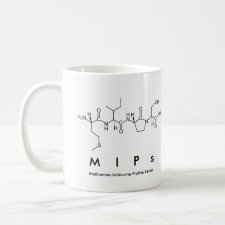
Authors: Porobic I, Kontrec D, Soskic M
Article Title: Molecular Recognition of Indole Derivatives by Polymers Imprinted With Indole-3-Acetic Acid: A QSPR Study.
Publication date: 2013
Journal: Bioorganic & Medicinal Chemistry
Volume: 21
Page numbers: 653-659.
DOI: 10.1016/j.bmc.2012.11.048
Alternative URL: http://www.sciencedirect.com/science/article/pii/S0021967312017943
Abstract: Three molecularly imprinted polymers (MIPs) were prepared using the phytohormone indole-3-acetic acid (IAA) as a template molecule, 4-vinylpyridine (MIP-1 and MIP-2) or N,N-dimethylaminoethyl methacrylate (MIP-3) as functional monomers, ethylenglycol dimethacrylate as a cross linker and acetonitrile (MIP-1), a methanol-water mixture (MIP-2) or chloroform (MIP-3) as porogens. Retention factors for IAA and 29 indole derivatives were determined by high-performance liquid chromatography, using the molecularly imprinted polymers as stationary phases and acetonitrile as an eluent. High correlations between selectivity factors of above mentioned polymers indicate that their retention mechanisms are basically the same. A quantitative structure-property relationships analysis revealed that the presence of the terminal carboxyl group on the 3-side chain plays an essential role in the binding of the indole derivatives to the polymers. The derivatives without the carboxyl group exhibit a drastically lower affinity toward the polymers. Another factor which favors the binding is electronic density of indole nucleus. Substituents with electro-withdrawing properties enhance the binding, while electro-donating substituents have the opposite effect. The length of the 3-side chain also affects the binding. Indole-3-carboxylic acid having the carboxyl group directly attached to the ring as well as the derivatives whose side chain is longer than that of IAA bind to the polymers with a lower affinity
Template and target information: indole-3-acetic acid, IAA
Author keywords: Indole derivatives, Molecularly imprinted polymers, high-performance liquid chromatography, Retention factors, Quantitative structure-property relationships



Join the Society for Molecular Imprinting

New items RSS feed
Sign-up for e-mail updates:
Choose between receiving an occasional newsletter or more frequent e-mail alerts.
Click here to go to the sign-up page.
Is your name elemental or peptidic? Enter your name and find out by clicking either of the buttons below!
Other products you may like:
 MIPdatabase
MIPdatabase









